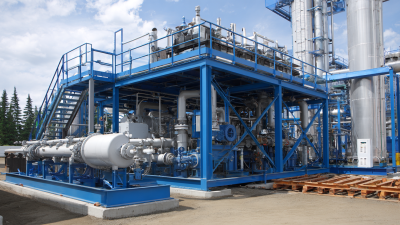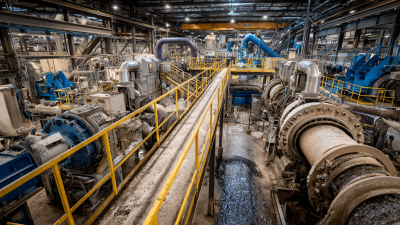

In the constantly changing world of oil and gas, Black Fine Sand has really become a key player in a bunch of projects—especially when it comes to separation and filtration. I came across a recent industry report that mentioned how the demand for top-quality sand like this is expected to shoot up. That’s mainly because companies are looking for smarter, more efficient ways to separate stuff and cut costs at the same time.
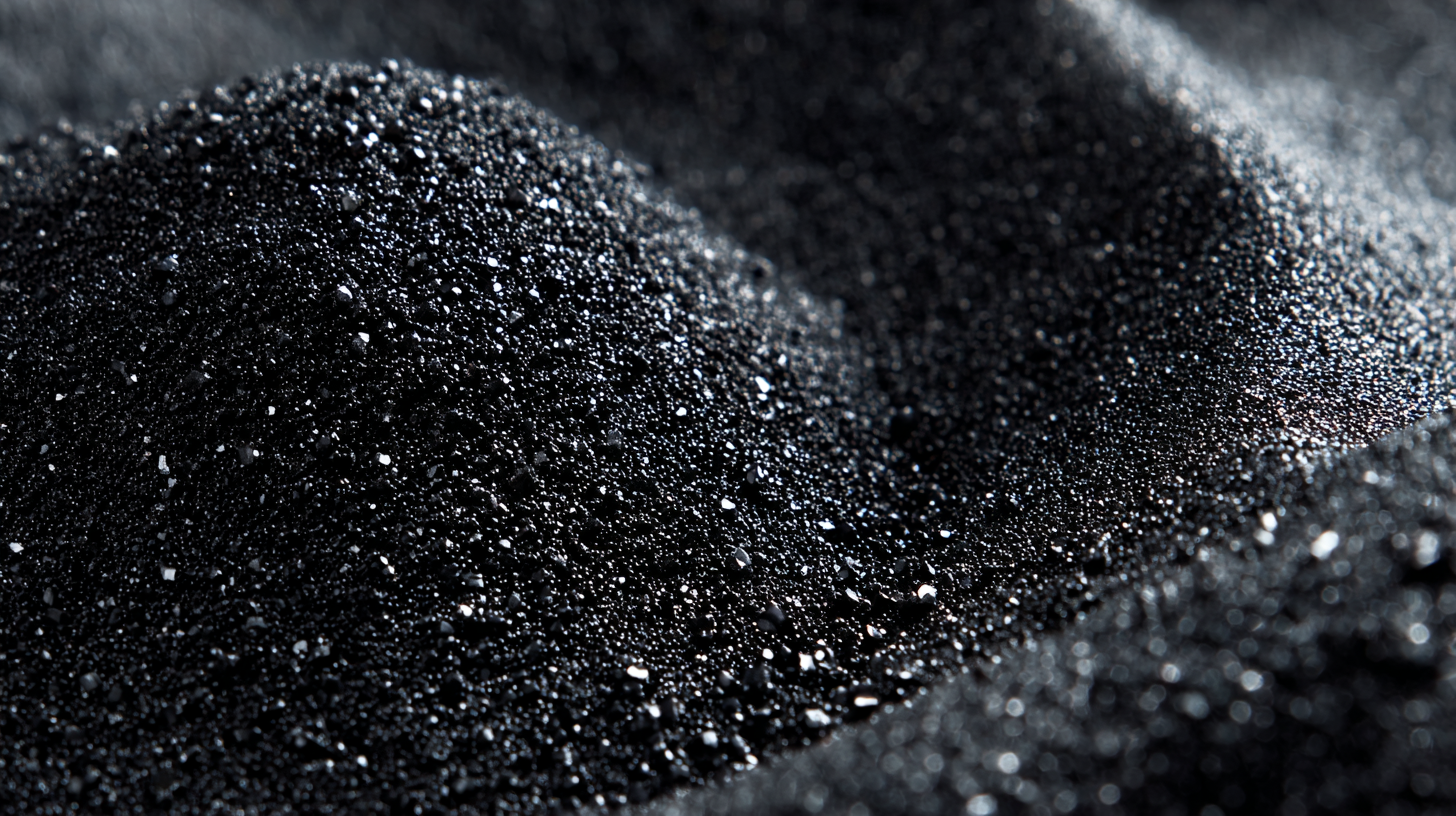
Shanghai Shangjiang Petroleum Engineering Equipment Co., Ltd. is all over this trend. They’re working hard on coming up with innovative cyclone separation tech that uses Black Fine Sand’s special properties. By making the most of this material, companies can fine-tune their filtration setups, which means better operations and a more sustainable energy production overall. If you’re thinking about using Black Fine Sand in your next project, it’s crucial to understand how it fits with industry standards and big-picture goals—because that’s what really matters to get the best results.
Whenever you're starting a construction or art project, I can't stress enough how important it is to pick high-quality black fine sand. Honestly, recent industry chatter and studies show that the quality of your sand can really make or break the final look and durability of what you're creating. For example, the American Concrete Institute pointed out that using pure, high-quality sand can boost the strength of concrete mixes by as much as 20%. That just shows how crucial fine sand is—not only for how things look but also for making sure your project holds up over time.
And it’s not just about looks—black fine sand’s mineral makeup actually helps in all sorts of uses, from landscaping projects to detailed crafts. Some research from the International Journal of Construction Materials and Structural Engineering mentions that sands with minerals like basalt and magnetite can help keep colors vibrant and also support eco-friendly practices. So, investing a bit more in top-notch black fine sand really pays off — it ensures your project performs well and lasts longer. Basically, choosing good quality sand is a pretty key step in making sure your work turns out awesome, whether it’s for industry or just for fun.
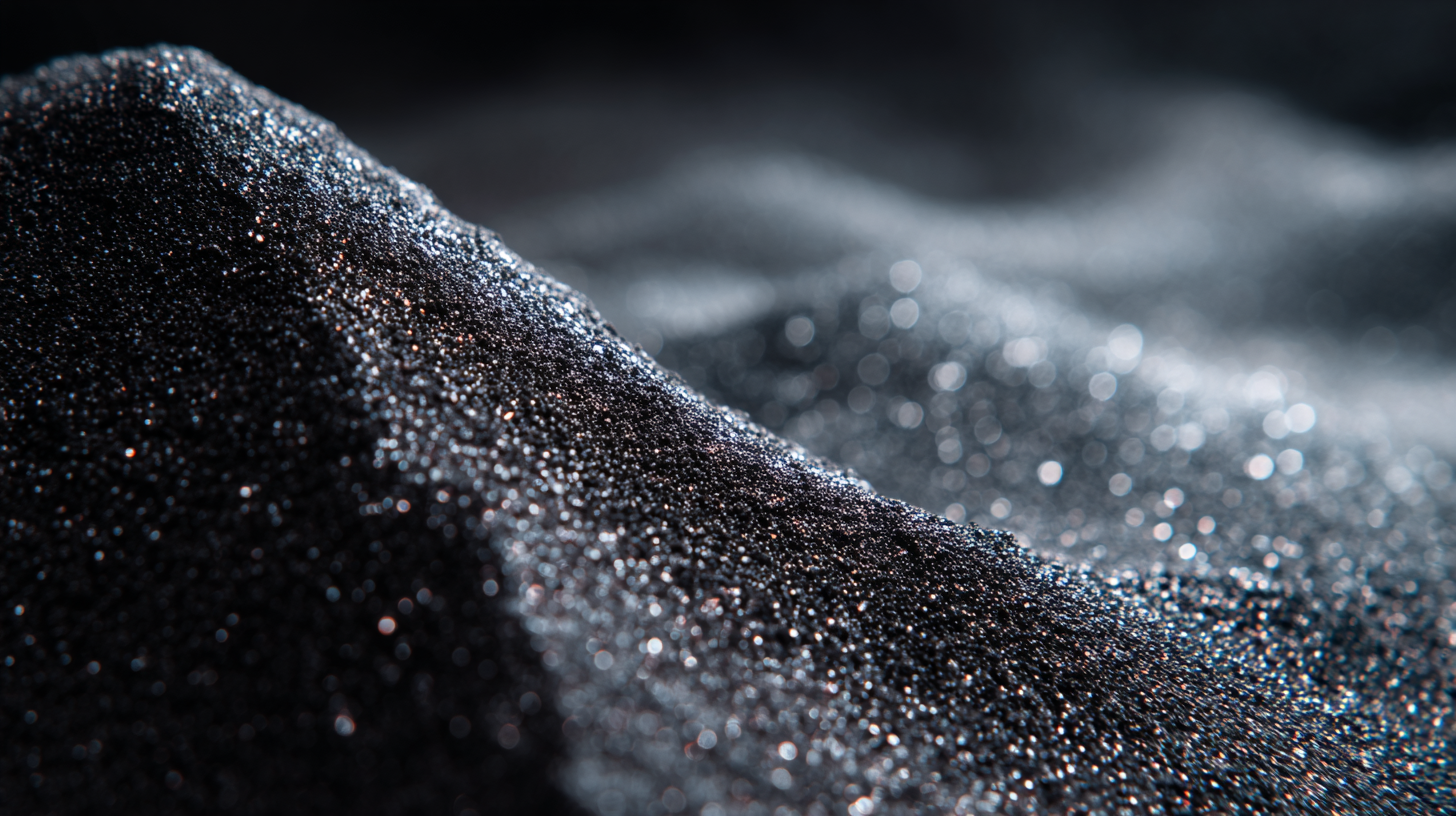
When you're choosing the right grade of black fine sand for your project, it's really helpful to understand the different grades and what they’re best suited for. Black fine sand comes in a bunch of types, each with its own unique traits, so picking the right one can make a huge difference. For example, the finer grades tend to be favored for artistic stuff—like crafting detailed landscaping designs or working with concrete—while the coarser options are better for things like drainage or preventing erosion.
**Tip 1:** Make sure to double-check the supplier’s specs on the sand grade. You want to be sure it checks all the boxes for what your project needs—some projects need stuff that packs down really well, while others need better water flow.
Using black fine sand in your mix actually adds more than just good looks. Its dark color really makes a nice contrast when landscaping, and on a practical side, it can help with temperature control. Basically, it absorbs heat pretty well, which can be handy in sandy surfaces.
**Tip 2:** If you're using black fine sand for construction or art projects, don’t hesitate to mix it up with other materials. This way, you can tweak the texture and strengthen the durability. Plus, the end results tend to look pretty impressive—more stable, visually appealing, and definitely eye-catching in any project.
| Grade | Particle Size (mm) | Typical Uses | Best Practice |
|---|---|---|---|
| Fine | 0.063 - 0.25 | Concrete, Mortar | Mix with water for better consistency |
| Medium | 0.25 - 0.5 | Landscaping, Filtration | Layer appropriately for drainage |
| Coarse | 0.5 - 2.0 | Paving, Base material | Compact well to ensure stability |
| Ultra-fine | Specialty coatings | Use sparingly to avoid clumping |
When you're adding black fine sand to your concrete mixes, it's super important to get your technique just right. Honestly, one of the biggest things is making sure the sand is evenly spread throughout the mix. A good trick? Start by mixing all the dry stuff — like cement and aggregates — really well before pouring in the water. That way, the black fine sand blends in smoothly, which not only looks better but also makes your concrete stronger and more durable.
Another thing to keep in mind is moisture. Adding too much water can turn your mix into a sloppy mess that might weaken it, but not enough can make things inconsistent. It's a good idea to do a quick moisture test on the sand before mixing, so you can adjust the water accordingly and keep the consistency just right. If you have a quality concrete mixer, definitely use it—these mixers are designed to ensure everything's mixed evenly, including that black fine sand.
And don’t forget about curing! The special properties of black fine sand can really boost how your concrete looks, but proper curing is key to avoiding cracks and making sure it solidifies well. Cover it up with plastic sheeting or use curing compounds, especially during those first few days after pouring. Trust me, this little step makes a huge difference in getting a strong, good-looking finished product.
When you're working with black fine sand in your projects, it’s really important to think about where you’re getting it from. Aim for suppliers who prioritize sustainable practices because, let’s face it, irresponsible extraction can really mess up the environment. Black fine sand, which often comes from volcanic ash or crushed granite, is pretty awesome — it gives a unique touch to landscaping, construction, or even art projects. But if it’s harvested carelessly, it can cause serious ecological damage and erosion. So, I’d definitely recommend checking out local suppliers who do environmentally-friendly mining; that way, you’re helping to keep natural habitats safe while still getting the material you need.
Also, thinking about the whole lifecycle of the materials you use can go a long way in making your project more sustainable. For instance, choosing recycled black fine sand or mixes that include other recycled aggregates isn’t just eco-friendly — it also cuts down on waste and reduces the need for new, virgin materials. These small choices add up and help lessen your project’s environmental impact. Overall, by being a bit more mindful and making these kinds of sustainable choices, you can enjoy the beauty and usefulness of black fine sand while also doing your part to support the environment and encourage a more circular approach in construction and design. It’s all about balancing your creative goals with responsibility, you know?
The following bar chart illustrates the environmental impact of various sourcing methods for black fine sand, compared against sustainable practices. The data reflects the percentage of ecological impact reduction achieved through sustainable sourcing methods.
Lately, black fine sand has been gaining popularity in landscaping and design, and honestly, it’s easy to see why. It has such a sleek look and works really well with so many styles. This stuff can totally transform outdoor spaces—adding a touch of elegance and sophistication, but at the same time, it promotes eco-friendly practices. Whether you’re laying it down in pathways, filling up garden beds, or creating a zen-inspired scene, black fine sand not only looks beautiful—it also helps with drainage, so water flows away nicely without any fuss.
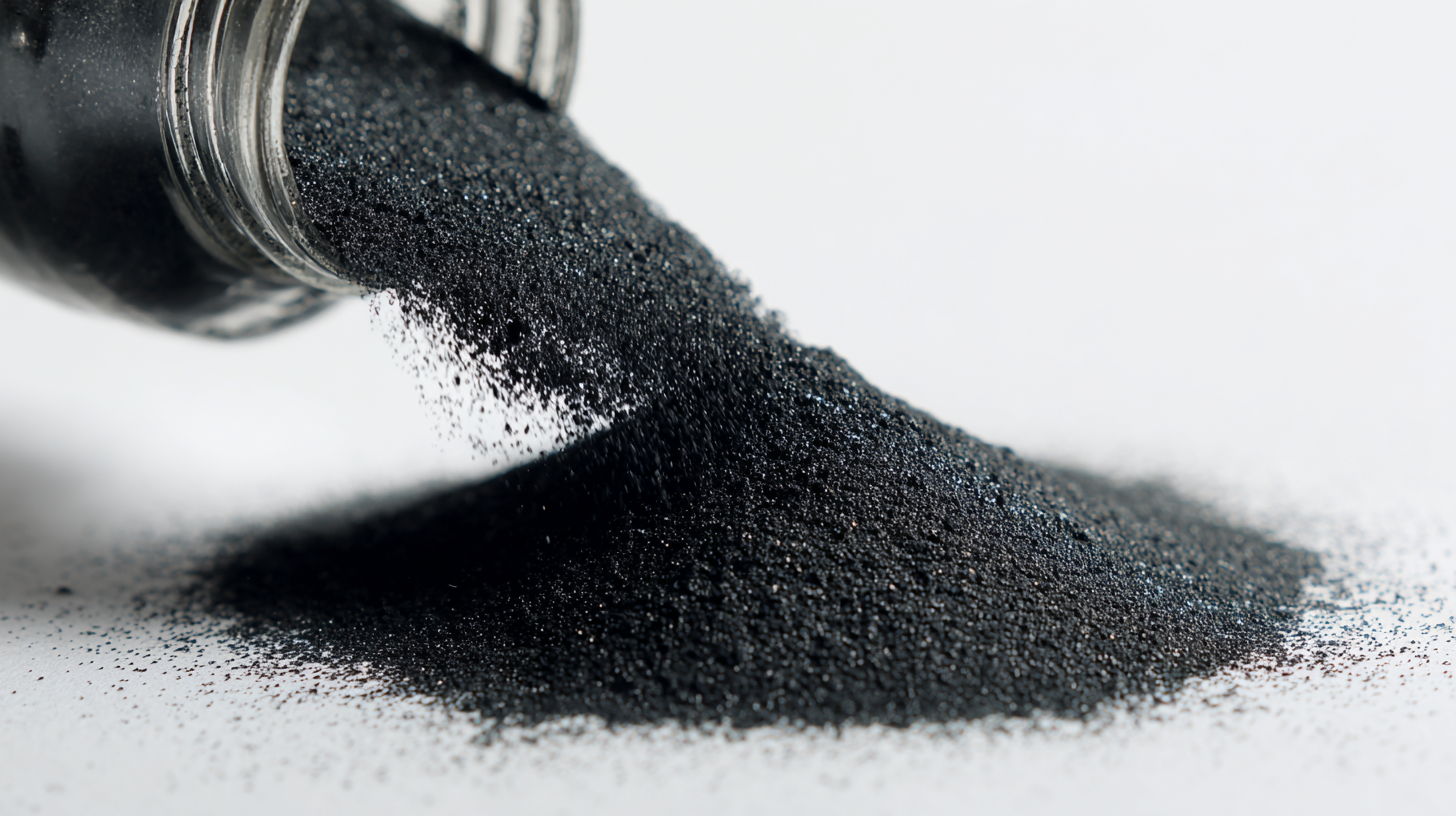
Pro tip: When you’re using black fine sand, try mixing it with some organic materials. It creates this gorgeous contrast with vibrant plants, making everything pop. It’s perfect for flower beds or rock gardens—you’ll love how it looks. Plus, if you use black sand in pots, it can really give your plants a more polished, eye-catching vibe.
Another cool idea is to use it in decorative features like fire pits or water elements. The dark color really makes the flames look hotter or makes the water shimmer even more. It’s a simple way to add a real wow factor to your garden.
Oh, and here’s a little tip: if you’re planning to use black fine sand in high-traffic areas, think about sealing it. That’ll help keep its rich color intact and stop it from eroding too quickly. Sure, it’s a small step, but it makes a big difference in keeping your landscape looking fresh and stylish for years to come.
When you're working with black fine sand in construction or landscaping, one of the main things you want to check is how strong and durable your mixes are. Black fine sand, with its nice fine texture and looks, can really boost how well concrete and mortar hold up—if you're mixing it right. But to really know if it's doing its job, you gotta run some tests, like measuring how much pressure the mix can take (compressive strength) or how much it can stretch before cracking (tensile strength). These tests tell you whether your finished product can handle the loads over time.
Another important thing is testing how durable your black fine sand mixes are when exposed to different environmental factors. Stuff like moisture, the freeze-thaw cycle, or exposure to chemicals can all affect how long your construction will last. Including black fine sand in durability checks helps you understand how it performs with other materials and cement. All of this info is super helpful—not just for picking the right materials, but also for designing structures that are tough, reliable, and built to stand the test of time.
: High-quality black fine sand significantly impacts both the durability and aesthetics of a project. Studies suggest that high-purity sand can improve the compressive strength of concrete mixtures by up to 20%, emphasizing its role in structural integrity and visual appeal.
Sands enriched with specific minerals like basalt and magnetite enhance color retention and support environmental sustainability, making them more effective for various applications.
Ensuring uniform distribution of black fine sand throughout the concrete mix is crucial. Thoroughly mix dry ingredients before adding water to blend the sand evenly for enhanced aesthetics and durability.
Proper moisture control is vital; too much moisture can weaken the concrete, while too little can cause inconsistency. Conduct a moisture test and adjust water content accordingly for optimal consistency.
The curing process is essential to prevent cracking and ensure strength. Maintaining moisture with plastic sheeting or curing compounds helps achieve a robust and visually appealing concrete structure.
Sourcing black fine sand sustainably is crucial to minimize environmental impact. Engaging local suppliers who use environmentally-friendly mining methods helps protect natural habitats and prevent erosion.
Opting for recycled black fine sand or blends that include recycled aggregates reduces waste and lessens the demand for virgin materials, thereby enhancing the sustainability of projects.
Black fine sand is valued in landscaping for its unique aesthetic qualities, and when sourced responsibly, it can contribute to both beauty and environmental sustainability.
The mineral composition of high-quality black fine sand improves color retention, enhancing the visual appeal of the final product in various applications.
A high-quality concrete mixer ensures thorough combination of materials, promoting even distribution of black fine sand and contributing to the overall strength and aesthetics of the concrete.
Using black fine sand in construction and landscaping can really boost both how things look and how well they perform. But, it’s super important to pick the right quality of black fine sand because different grades are suited for different jobs. When you're mixing it into concrete, for example, you’ve got to get the technique just right to make sure everything stays strong and lasts long. Plus, we shouldn’t forget about the environment — sourcing this material sustainably is a big plus.
These days, people are finding new and exciting ways to use black fine sand in landscaping and design. Its unique textures and colors really make outdoor spaces pop. For folks working in oil and gas, like those at Shanghai Shangjiang Petroleum Engineering Equipment Co., Ltd., it’s key to stay updated on how the sand mixes perform. Knowing this can help improve filtration and separation tech, which is a win for everyone. If project managers understand these best practices, they can really crank out top-notch results and do their part to keep things eco-friendly.




